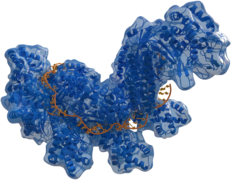Scientists working at the Massachusetts Institute of Technology’s (MIT) McGovern Institute for Brain Research have found thousands of groundbreaking enzymes called Fanzors. Fanzors – produced in snails, amoeba, and algae – are RNA-guided enzymes. These enzymes combine enzymatic activity with programmable nucleic acid recognition, allowing a single protein or protein complex to aim at several sites. These enzymes were previously found in prokaryotes, like bacteria.
An example of one of these enzymes is CRISPR, which instead of coming from Eukaryotes like the new Fanzors, “CRISPR technology was adapted from the natural defense mechanisms of bacteria and archaea, a domain of relatively simple single-celled microorganisms”, according to LiveScience. Similar to Fanzors, these enzymes could alter genetic information and how the cell functions.
Although similar enzymes to Fanzors have existed, McGovern Fellow Jonathan Gootenberg says, “Eukaryotic systems are really just a whole new kind of playground to work in.” Eukaryotic cells carry membrane bound organelles, such as a nucleus, which holds genetic information, and a mitochondrion, which produces energy, but neither are found in prokaryotic cells, which have no membrane bound organelles. Eukaryotes are also the basis for both unicellular and multicellular organisms, while prokaryotic cells have no membrane bound organelles, and are solely the basis of unicellular organisms. Eukaryotes are found in animal cells, just like ours, while prokaryotic cells are found in bacteria and archaea. Furthermore, TechnologyNetwork says that prokaryotic cells are much smaller than eukaryotic cells “measuring around 0.1-5 μm in diameter”, while, “eukaryotic cells are large (around 10-100 μm) and complex”.
Eukaryotic cell and its organelles (left) and a prokaryotic cell and its flagella, or tails (right) [NDLA]
How do you expect or want this new discovery to be utilized? Are you excited for the new avenues for research Fanzors can create? Let me know in the comments!




Leave a Reply